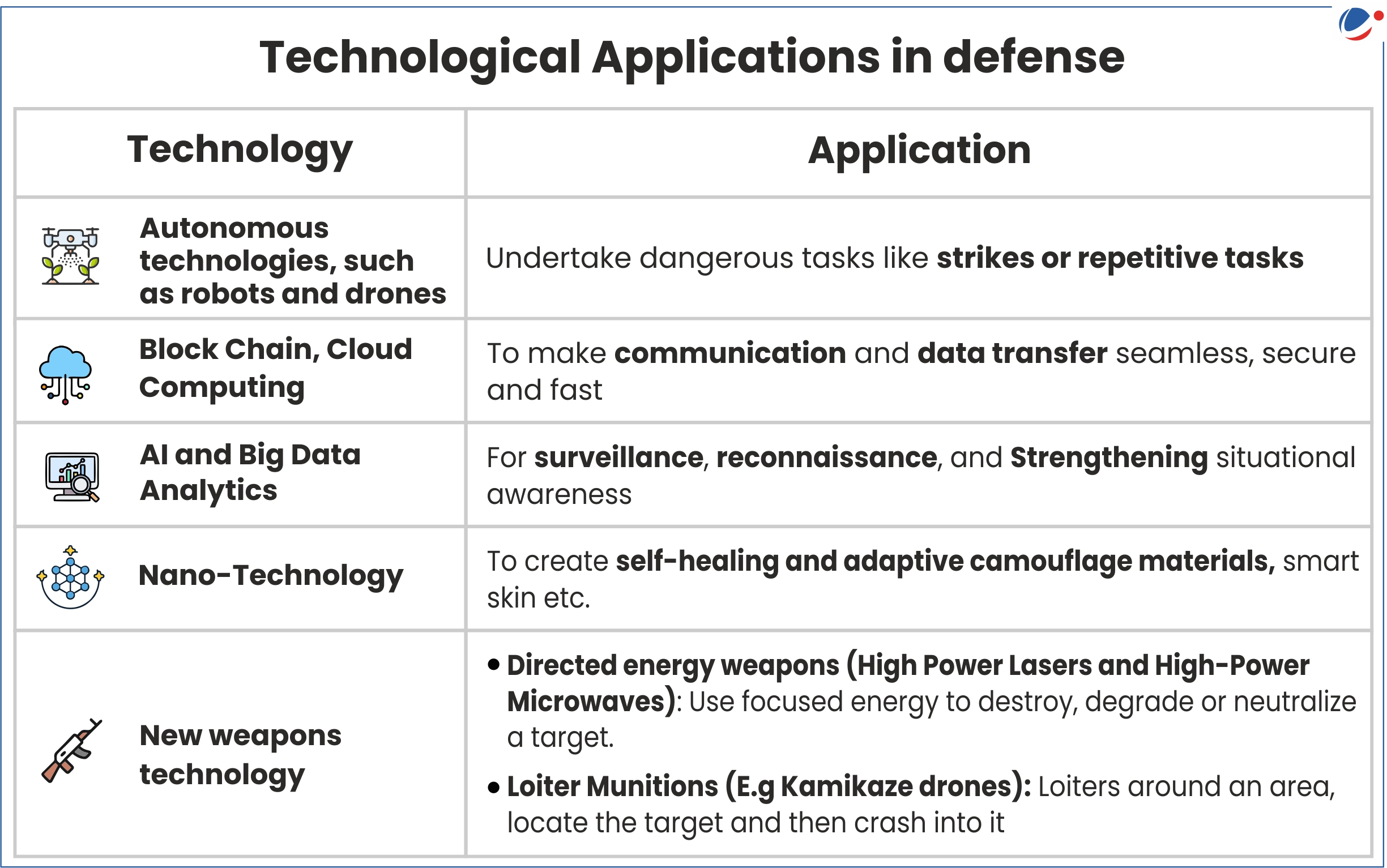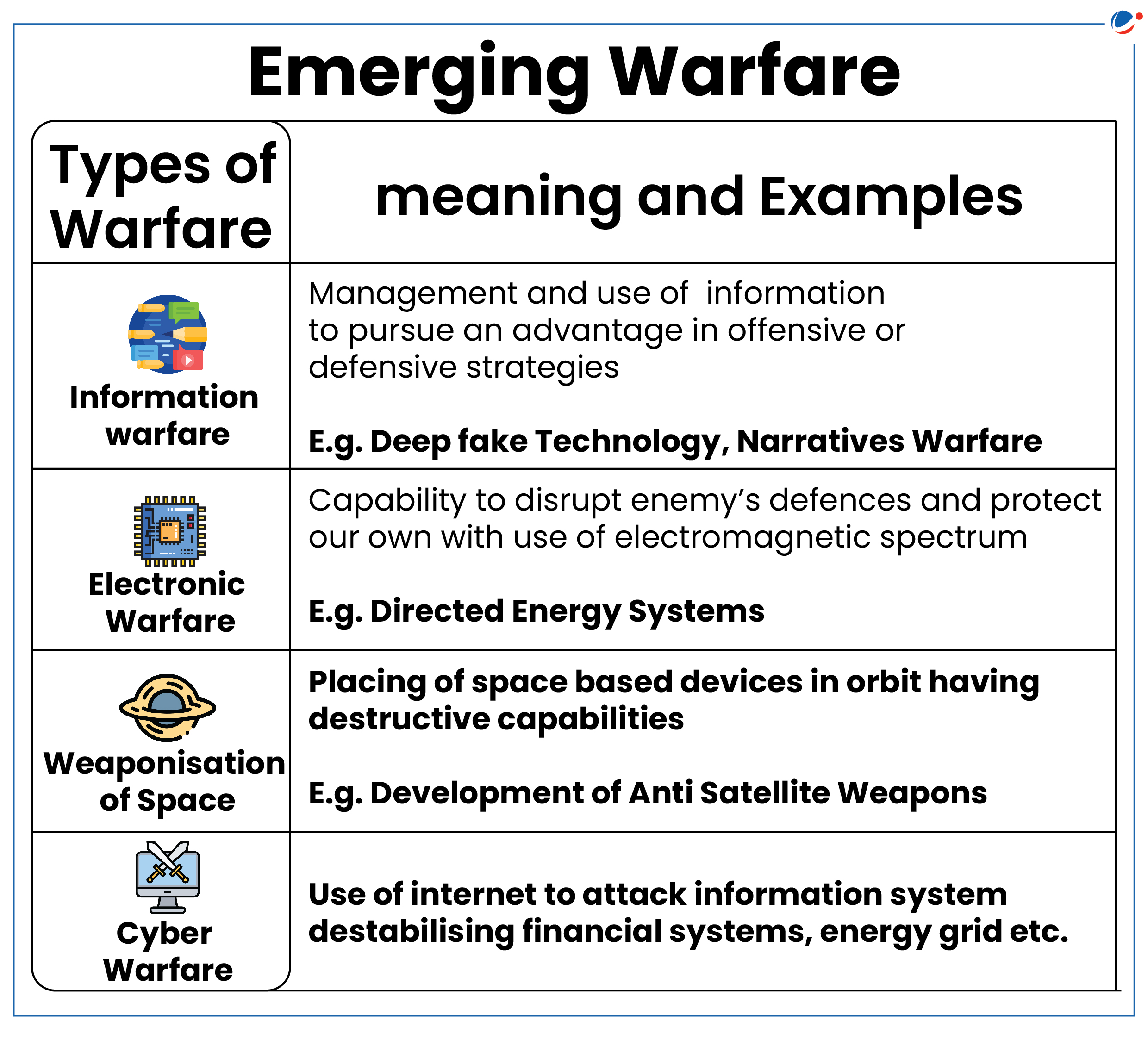Why in the news?
The Indian Army is observing the year 2024 as the year of Technology Absorption.
What is meant by Technology Absorption?
- It means acquisition, adaptation and integration of technologies into existing structures (also known as legacy systems).
- In present times, technology adoption is synonymous with integration of disruptive technologies such as artificial intelligence, hypersonic weapons, biotechnology, quantum technology etc.

Need of Technology Absorption in Defence for India
- Emergence of hybrid warfare: It is leading to the emergence of new threats such as:- (see infographics)
- Maintenance of military superiority and strategic competition: The world powers
(e.g USA and China) are increasingly integrating disruptive technologies in their military.
- Maintenance of Regional Security: Strong technological capability is essential to maintaining and asserting India's status as a 'Net Security Provider' and securing its legitimate security interests in the region.
- Enhance operational efficiency of defence forces: Various technologies can also help free up human soldiers for more strategic tasks.
- Achieve targets of Defence production and export: Indigenous innovation and technologies are key to enhancing defence exports.
- The government of India expects to generate annual defence production worth Rs 3 lakh crore and exports worth Rs 50,000 crore by 2028-29.
- Emergence of new digital technologies: New applications like micro-electronics, precision attack systems, Loiter Munitions etc. are challenging traditional ecosystems.

Challenges related to technology adoption in defence
- Low expenditure on defence R&D budget: According to the Parliamentary standing committee on defence report (2023-24) actual expenditure on defence R&D in 2021-22 amounted to ₹ 18,669.66 crore against Budget Estimate allocation of ₹ 20,757.44 crore.
- Moreover, Committee also highlighted that the private Defence industry is also in a nascent stage and lacks the capability of spending pend huge sum on R&D.
- Strain on defence budgets: Due to High Initial Cost in procurement and development of cutting edge technology.
- Import dependency: India has been largely dependent on foreign technology for advanced weapons.
- Complexities involved in integration of new technologies: New defense equipment are difficult to integrate in existing defense strategies due to issues like their obsolescence and long service lives of equipment, and compatibility issues.
- Administrative issues: Such as need of organisational restructuring, human resources management, civil-military fusion etc.
- Cyber Security vulnerability: Inadequate domestic manufacturing capabilities for cyber and communication equipment resulting in over-reliance on import of communication equipment.
- This can result in security threats due to concerns like 'backdoor setup' in operating systems, communication hardwares, etc.
Measures taken by India for tech-Absorption
|
Way Forward
- Implementation of Recommendations of Prof K Vijay Raghavan Committee:
- Creation of "Department of Defence Science, Technology, and Innovation" headed by a technocrat, to promote defence research and development in the academic and start-up ecosystem.
- Establishment of "Defence Technology Council" chaired by Prime Minister along with Defence Minister and National Security Advisor as its vice-presidents to determine the country's defence technology roadmap
- Setting up national-level laboratory facilities instead of DRDO labs.
- Streamlining Regulatory and Procurement Processes by simplifying documentation requirements and reducing processing times.
- Prioritizing technology over cost to encourage the selection of advanced and niche technologies.
- Promoting private sector participation in manufacturing of defence equipment by simplifying the licensing and regulatory procedures, creating a level playing field, and providing access to technology
- Creation of specialist officers and specialised cadres such as cyber experts by providing specific training and education through civil-military infusion.
Conclusion
As nations undergo military modernisation, driven by larger geopolitical shifts, advanced technologies are becoming pivotal in warfare. The future battlespace will be shaped by technology, and technological superiority is expected to determine the outcome of future battles to a large extent. Thus, it becomes essential to focus on technological self-reliance.





